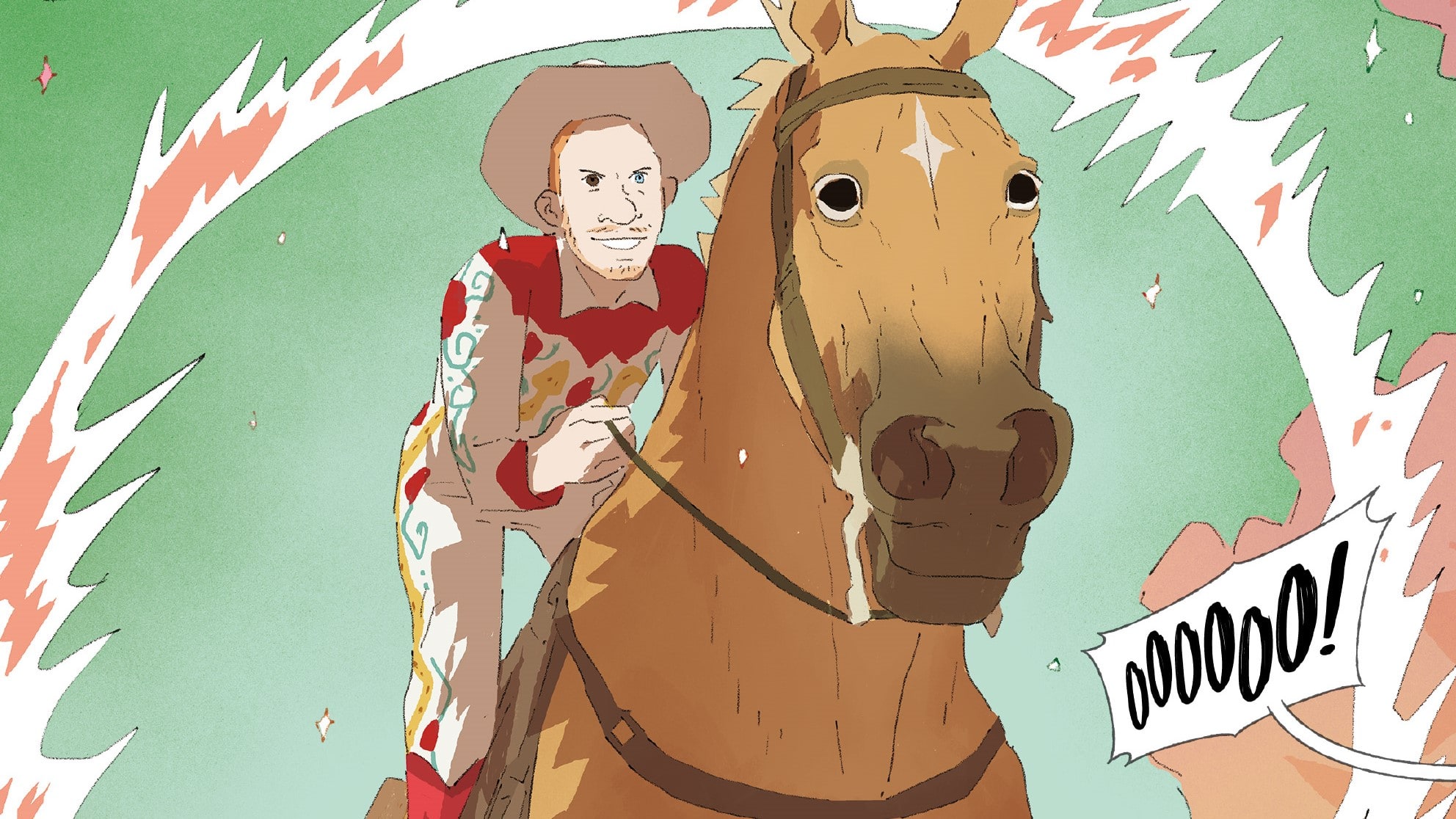
Comics Corner – The Greg Lockard Tapes, Part 2
In part one of our conversation with Greg Lockard, we talked origin stories and the impact of two of his biggest works to date, Liebestrasse and Trick Pony. Here, we dive into the deeper themes of those works, the political pressures influencing them, and the wider state of LGBTQ+ representation in the American comic book industry.
Having penned mainstream superhero stories for DC, worked as an editor at the mature readers-focused Vertigo imprint, and created and released numerous independent works of his own, Lockard also offers insight on how the industry has evolved over the years – and whether the now annual Pride month showcases of queer characters do enough to spotlight the characters and creators involved.
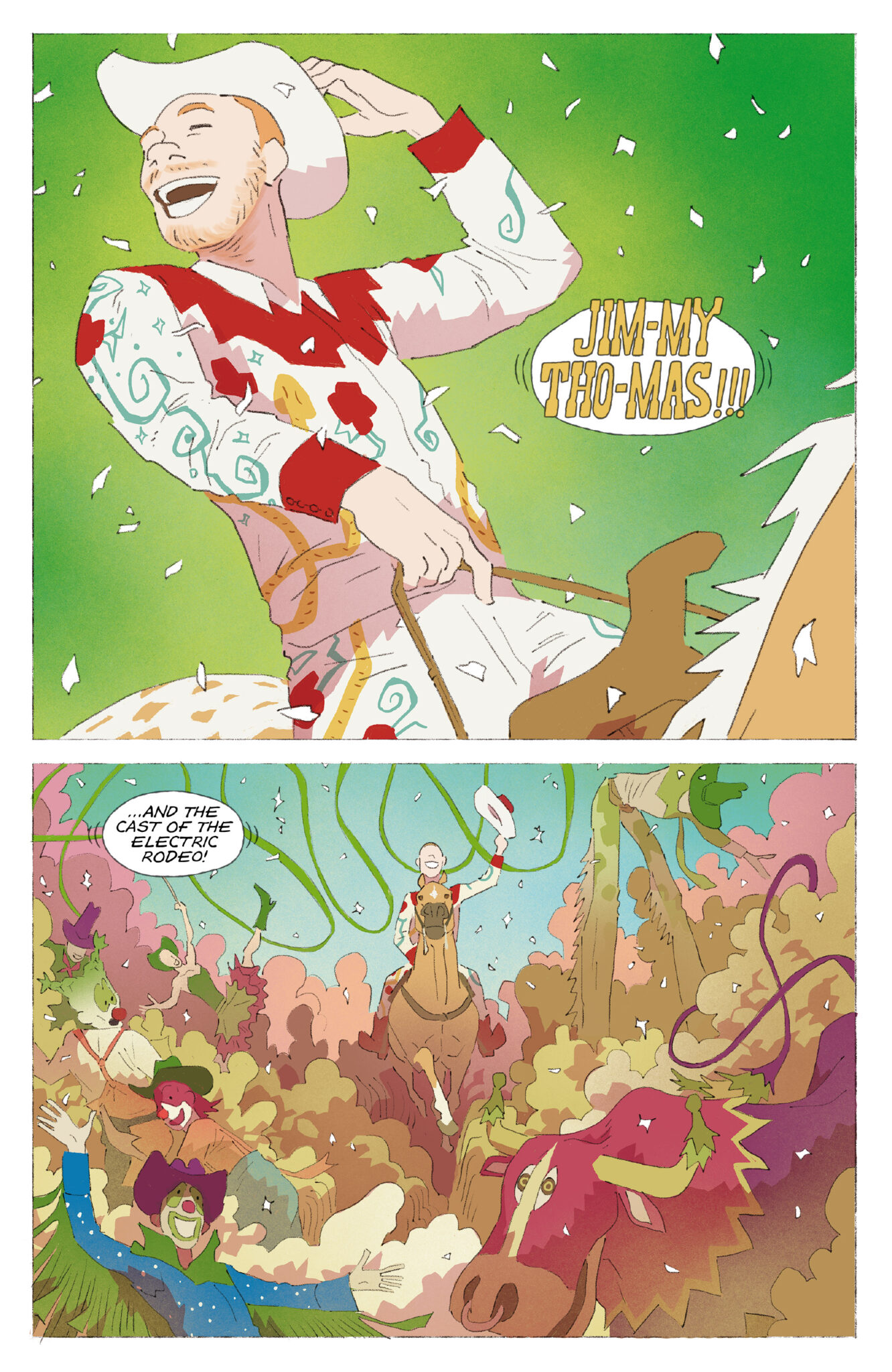
Matt Kamen: Across Liebestrasse and Trick Pony, you seem to be trying to balance a kind of queer idealism against a sense of love denied. Philip and Samuel in the former have a long idyllic period; Zeke and Jimmy in the latter have a well-accepted teen gay love story, but in both books, the protagonists never end up together. What was your thought process there?
Greg Lockard: So, Sam in Liebestrasse and Jimmy in Trick Pony both ending ending up alone is not on purpose, but yeah, it’s probably a theme that runs through them both. I do like that sense of optimism but they’re both about survival. In Jimmy’s case, it is in this idealised fantastical American Southwest where they are just accepted for who they are, and hopefully that runs through. That’s the background, that was the idea and the background of Trick Pony, that it is the Southwest as it truly looks in America, that it is a diverse place. There’s tonnes of erasure in the western genre, of black people, of Mexican people, of Indigenous people, and so I wanted it to be the real Southwest, but idealised of course, where homophobia, and transphobia, and that stuff was not the main problem for the characters. And yeah, I think that’s the same hope and optimism through these sadnesses, whether it was Jimmy’s internal struggle or Sam’s struggles.
MK: Is the American Southwest your background?
GL: No, no. It does represent aspects of my paternal family tree, and that I wanted to do justice by it. Because I do think that the politics around queer identities in America – well, anywhere in the world, right? – politicians set up an us-versus-them [conflict]. It’s a very common political trick, and I think poor people in America, regardless of race, are always set up or used, and religious puritanism is something is used in lot of these sections of America to whip up fear, but in my experience that’s a total outside force. These families are the kindest and most gentle people outside of the religious aspects or [geographic] isolation. But I’m not the only queer person in my extended family and it is a “stereotypical” family, where you would not expect that to be the case. And I love that, and I appreciate that I have that. So that was sort of the inspiration [for Jimmy’s background], just extending that outward.
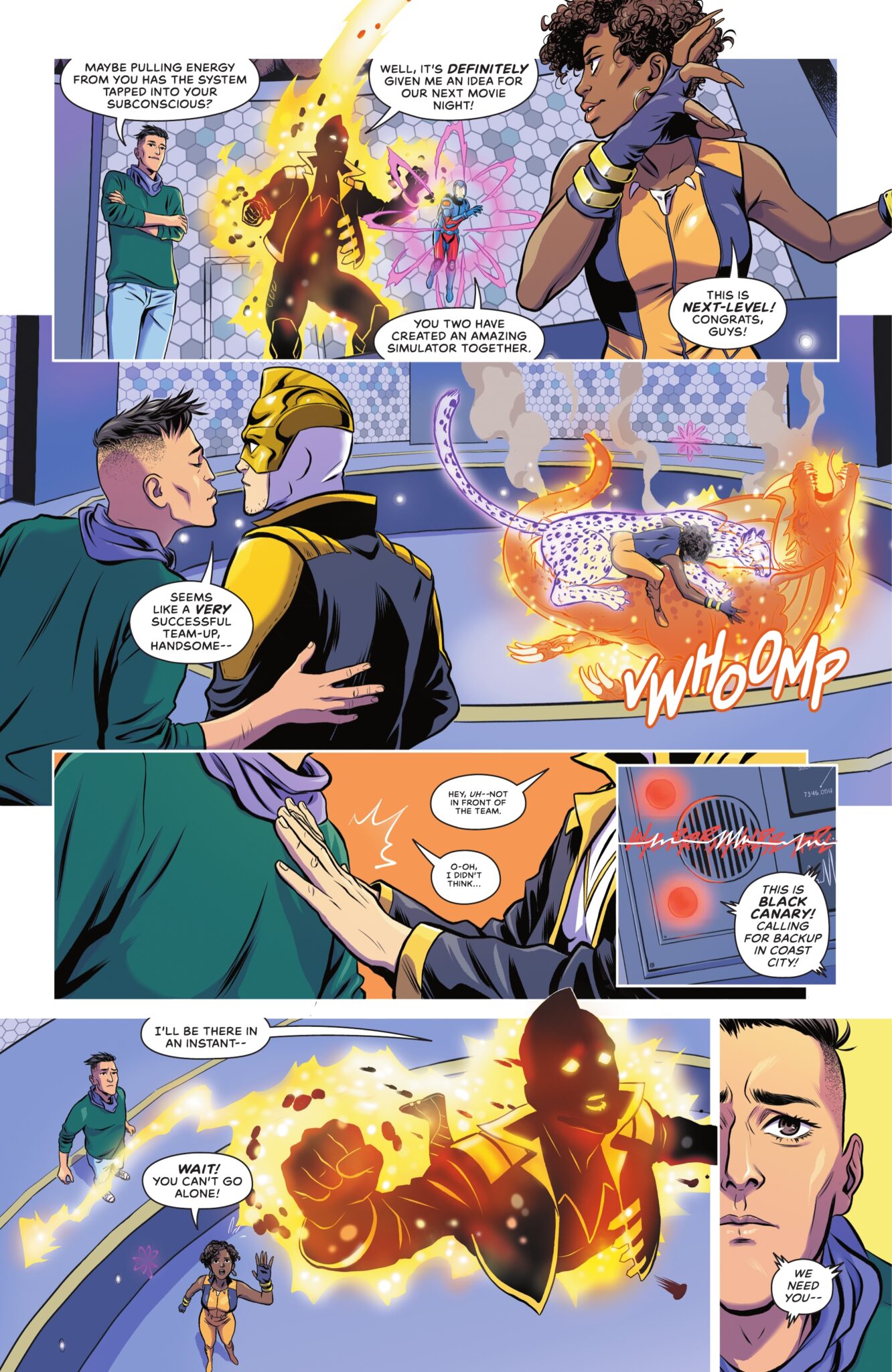
MK: You did The Ray short in DC Pride 2022, “Public Display of Electromagnetism”, where the light-powered superhero struggles to show affection to his boyfriend when other people are around. The modern version of The Ray had, from his introduction, this abusive background where he was literally locked away in the dark. At the time, the character wasn’t intended to be gay or queer in any capacity, so was that existing trauma almost useful, in hindsight, to turn into a metaphor for the queer experience and a way to explore the character’s internalised homophobia?
GL: Yeah, and that was all Steve Orlando, I have to give credit to him because that all happened in the pages of his Justice League run, and [Ray’s coming out] was a really beautiful story. For the DC Pride short story, the only creative boundaries I was given was that it just had to fit somewhere in that continuity. Andrea Shea, the editor, and I had a discussion about taking advantage of the Pride anthology to explore that Ray and his partner had not been affectionate within the pages of Justice League – in part because, you know, it’s a team book, and those personal moments aren’t always the easiest to fit into those big books – but the whole idea was to give to give Ray a kiss! It was very simple.
So yeah, back to the question, I wasn’t trying to ignore that past, and I think they address it in the way they talk, because the whole conflict is Ray is working through this really traumatic past and I think that’s really relatable for all queer people. It was really nice to have this couple, and have eight pages to just talk about that, because public displays of affection are often strange or even dangerous for queer people.
And it’s just really nice. I love playing in that world. I love that Ray costume, the ’90s version, that Joe Quesada art!
MK: You’ve mentioned being an intern at DC, and you were an editor over on the Vertigo imprint, which was always pushing boundaries in terms of queer representation, even back in the late 1980s. From the editorial rather than writer perspective, did you notice a shift when LGBTQ+ representation, particularly in the superhero lines, became more acceptable?
GL: It’s really interesting because I think it got that much stronger once [DC’s headquarters] moved to California. So the more recent DC support – and Marvel with their Pride anthologies too – I think DC is doing a really good job about noting and marketing the books that include these characters, and spreading out that the Pride marketing all year round. Because that wasn’t the case when I was there – you would get occasional stories. I did assistant edit on an Apollo and Midnighter story that Peter Milligan and Simon Bisley worked on for a romance anthology, but that stuff was kind of few and far between at that point. So yeah, that has been a nice change, that they’ve really leaned into that.
And yeah, Vertigo was always good – my favourite books were the queer ones, like The Invisibles, Rachel Pollack’s Doom Patrol, Enigma was a big one for me. That’s kind of why I was primarily a Vertigo reader and then why it made it feel like home when I was working there – which is a bizarre thing to say about work, slightly unhealthy!
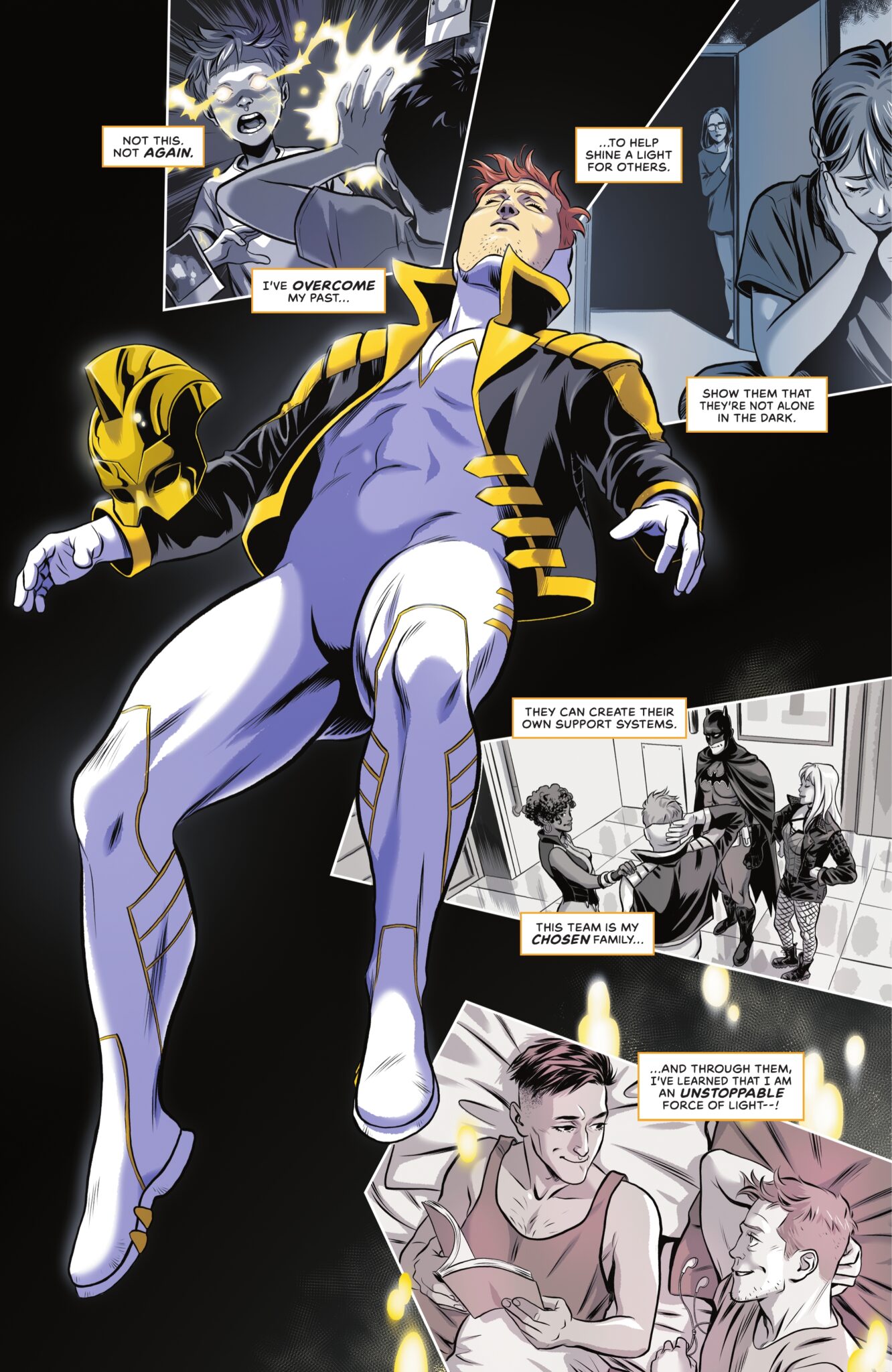
MK: Do you think there’s a danger that, given the success and positive press that Marvel and DC have seen with their Pride anthologies and queer characters, that there’s a risk that those spotlights become exploitative rather than genuine – chasing the Pink Pound or Pink Dollar rather than serving those characters and audiences?
GL: Yes, that is a very real danger. So while I do credit them for the books, companies don’t love you, companies love your money. I mean, I say that with hesitation, because I know there are real editors and real writers and artists, and everyone throughout the whole production, that really are pouring their hearts into these comics, but there is an aspect of capitalism where it could just become part of the machine. So, yes, that is definitely a danger but hopefully it introduces these creators, and gives a chance to have a spotlight and a chance to connect with readers that want that material, and then follow their careers. Even people like me, I hope that people read that Ray story, or read the Apollo/Midnighter story that I did, and that they see something new in those characters that they love, but maybe also see something in me or Giulio Macaione who drew both of those. And he has a full career in Italy and the Italian market doing queer stories for people to discover! So hopefully it connects with readers.
MK: Do you think there’s been enough follow through after these annual Pride spotlights? You have a cluster of eight-page queer-themed stories and characters once a year, and then most aren’t seen again until the next year. For instance, DC has done Pride stories with the non-binary Flash from Earth-11, but they barely show up outside of those specials. Is it “roll up queers, give us your money, and we’ll see you next year!”?
GL: I mean, just being sharky about it from a business standpoint, that’d just be stupid. I think right now, it’s not just the queer characters, but any characters that are outside of the Batman and X-Men franchises are hard to launch. So, I don’t know if it’s necessarily just leaving those characters on the shelf for a year or it’s just really hard to launch new superhero titles.
MK: Sort of how DC’s had its big ‘Dawn of DC’ quasi-relaunch, but most of the new titles have been six-issue mniseries rather than ongoings? That seems to show no confidence in any of these characters or titles that are being launched, other than the continuing over-dominance of the Batman line – more a sunset than a dawn.
GL: Right, that’s true. I think – and I mean, I’m just guessing from the outside here, I have no inside insight – but Poison Ivy was launched as a miniseries and that got expanded. So I do think that’s part of their new business model. I do hope, like with Poison Ivy, they see it, they’re like “it’s well written, it’s beautifully drawn, let’s keep going, the fans are showing up”, it might be some of that going on.
MK: Despite all that we’ve just been discussing on the nature of corporate “Big Two” comics, would you do more superhero stuff, either queer-focused or not?
GL: Oh yes! I love it. Like you said, optimism is everywhere my work and the optimism that’s inherent to superheroes is something I love. So yes. I am out there. Begging!
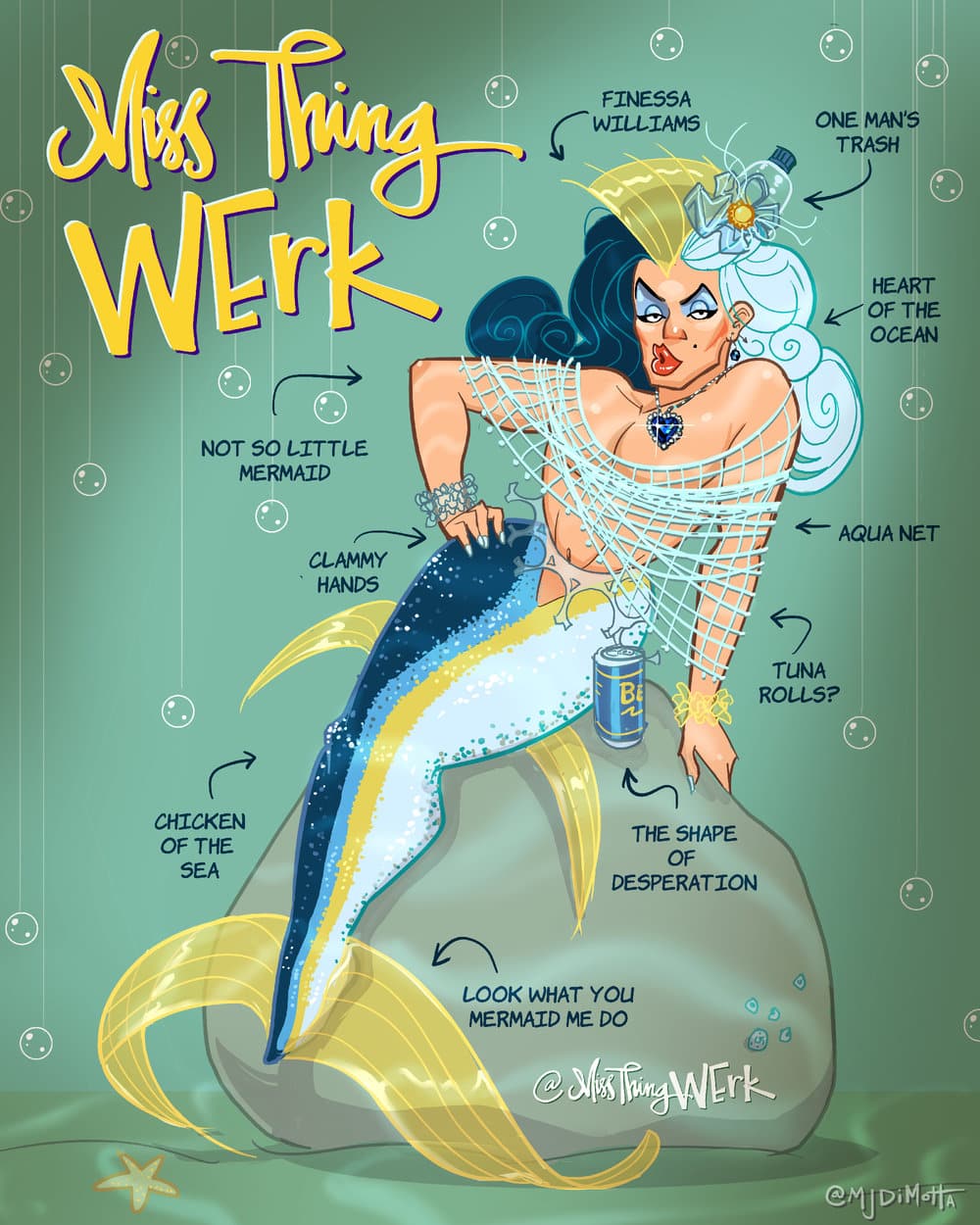
MK: On your site, you have a few single pages and key visuals for another of your own characters, Miss Thing Werk, “a drag queen office temp with an overactive imagination”. There’s some fun looks and great ideas in them – do you have plans to do more with that character, or are they going to remain pin-up pages?
GL: Yes, so that’s with Mike DiMotta again, my friend from the internship [ed. Note: mentioned in part one of our chat with Greg!]. We created Miss Thing Werk a long time ago, and we did one zine, but it was sort of more a storybook than actual comic book pages. Each page [its own thing], more like a picture book. We always talk about doing more with her – we’ve pitched stories, we’ve pitched comic books, it just never has gelled.
But I was, coincidentally, just in Portland for a different work event. Mike lives there, and we were talking about the drag bans and all this insanity, and we’re like “maybe it is time for Miss Thing Werk to come back?” She lives in my heart!
MK: And what is next for you, work-wise, comic-wise, book-wise?
GL: Right now, the books I’m working on are all in early development or pitch forms. So, nothing specific but hopefully! I am a slow writer! The day job is editing, and right now it’s very busy, so it does slow me down on the writing front, but there’s stuff in development and hopefully I’ll have some news for you soon!
Liebestrasse by Greg Lockard and Tim Fish is available digitally through comiXology (UK store here, US store here) or in print from Dark Horse. Trick Pony by Greg Lockard and Anna David is available digitally through comiXology (UK store here, US store here). Keep up with Greg’s work on his personal website.







